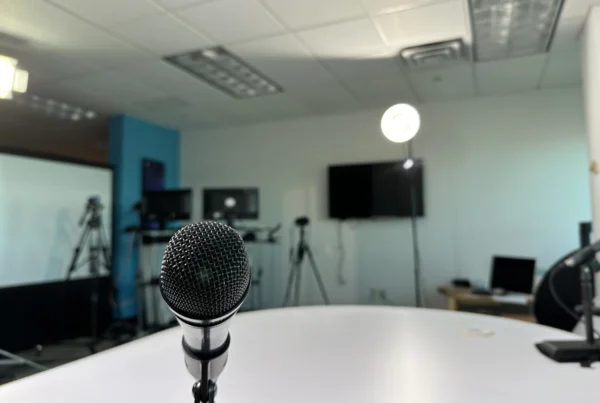You may have heard the recent “controversy” about Meta reducing the prominence of news and political content on Facebook, Instagram but more specifically its new competitor to Twitter, Threads.
Given Tunheim’s role as a public relations and a public affairs practitioner, those are two industry sectors I pay close attention to.
And boy are they loud on this subject. Cries of throttling free speech and censorship have been thrown about with abandon.
Yes, Meta has been reducing the prominence of news and political content on its platforms but this is not a new phenomenon. It’s been happening for years. The only difference is the claim Adam Mosseri, who leads both Instagram and now Threads, made that Meta’s new Twitter competitor would not be amplifying that type of content.
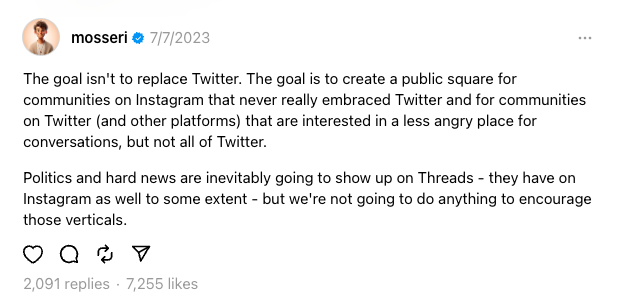
With a lot of journalists and politicos fleeing Twitter–where news and politics have long been the dominant topics–to Threads, the statement caused an uproar.
Personally, I’ve been using Threads from launch, and, as a news and politics junkie, my Threads feed reflects just that: It is almost entirely news and politics. The uproar appears to me to be a handful of loud voices gaming the refs.
Even so, social media writ large has been reducing the reach of some types of content. I first noticed it in 2014, so, not new.
In that year, social media management company Buffer shared research documenting the phenomenon.
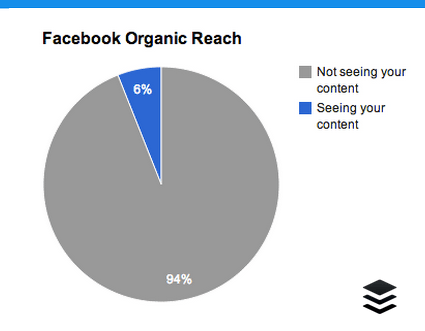
Jay Baer of Convince and Convert mashed up reach data with Facebook’s stock price, illustrating a correlation between diminished reach with financial reward for the company:
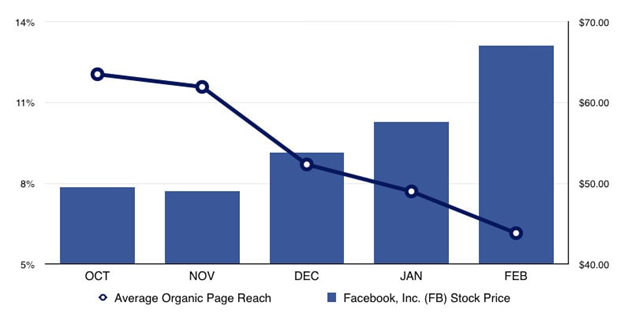
So, what gives? What’s the financial incentive for Facebook to reduce the reach of its users’ content?
Well, if you can’t get exposure for your content by just posting to your Facebook page, what options do you have? Facebook advertising, of course!
Content analytics company BuzzSumo documented a decline in Facebook engagements across all post types from 2016 to 2017.
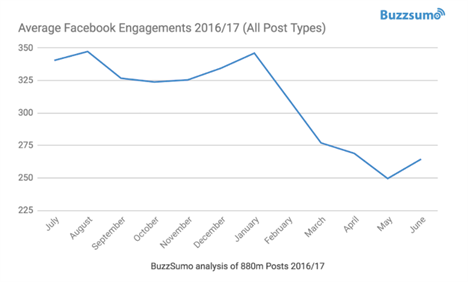
The Link Penalty
BuzzSumo supplemented that general engagement data with insight into which types of posts got the most and the least engagement.
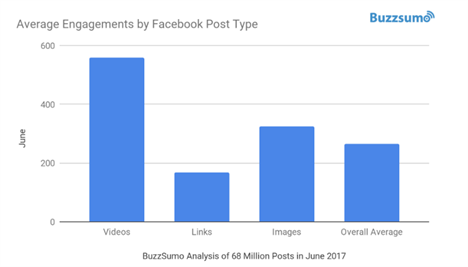
While Parse.ly published findings that documented a decline in referral traffic Facebook was sending other websites from 2017 to 2018.
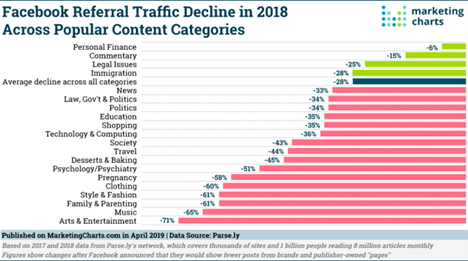
SparkToro published a study on Google searches that documented a decline in mobile click-through rates from 2016 to 2018.
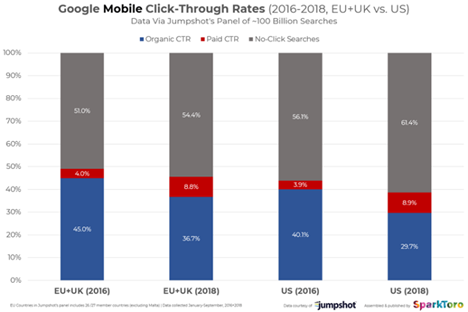
So, yes, this decline in reach has been happening for years and Facebook isn’t the only culprit. Google’s in on the game, too.
So what’s the common denominator? Links, it would appear. Links get the least engagement on Facebook. Facebook is sending less referral traffic to other websites through–you guessed it!–links. And Google is reducing the click-through rate on…links!
In 2021, social media management company Hootsuite conducted its own research that reinforces this observation, showing that posts on LinkedIn that include a link to a website enjoy fewer impressions and much less engagement across the board.
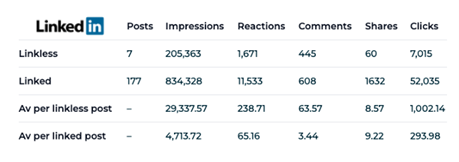
They also looked at posts that included a link to a YouTube video on Twitter, LinkedIn and Facebook:

But why penalize links?
Because the various platforms want you to stay on their platform. The more people who spend more time on their platform do more things that create more signals and data that can be monetized in the form of advertising.
It’s An Algorithmic World
I’ve been doing search engine optimization my entire career and social media most of my career. If there’s one constant, it’s that algorithms change. All the time.
Success depends upon understanding that, stay on top of those changes, and adjusting to the new realities.
Rethinking Social Media
Organizations and brands that have been relying on link posts need to rethink their approach to social media. This is where we excel. If you need help thinking that through, let’s talk!






